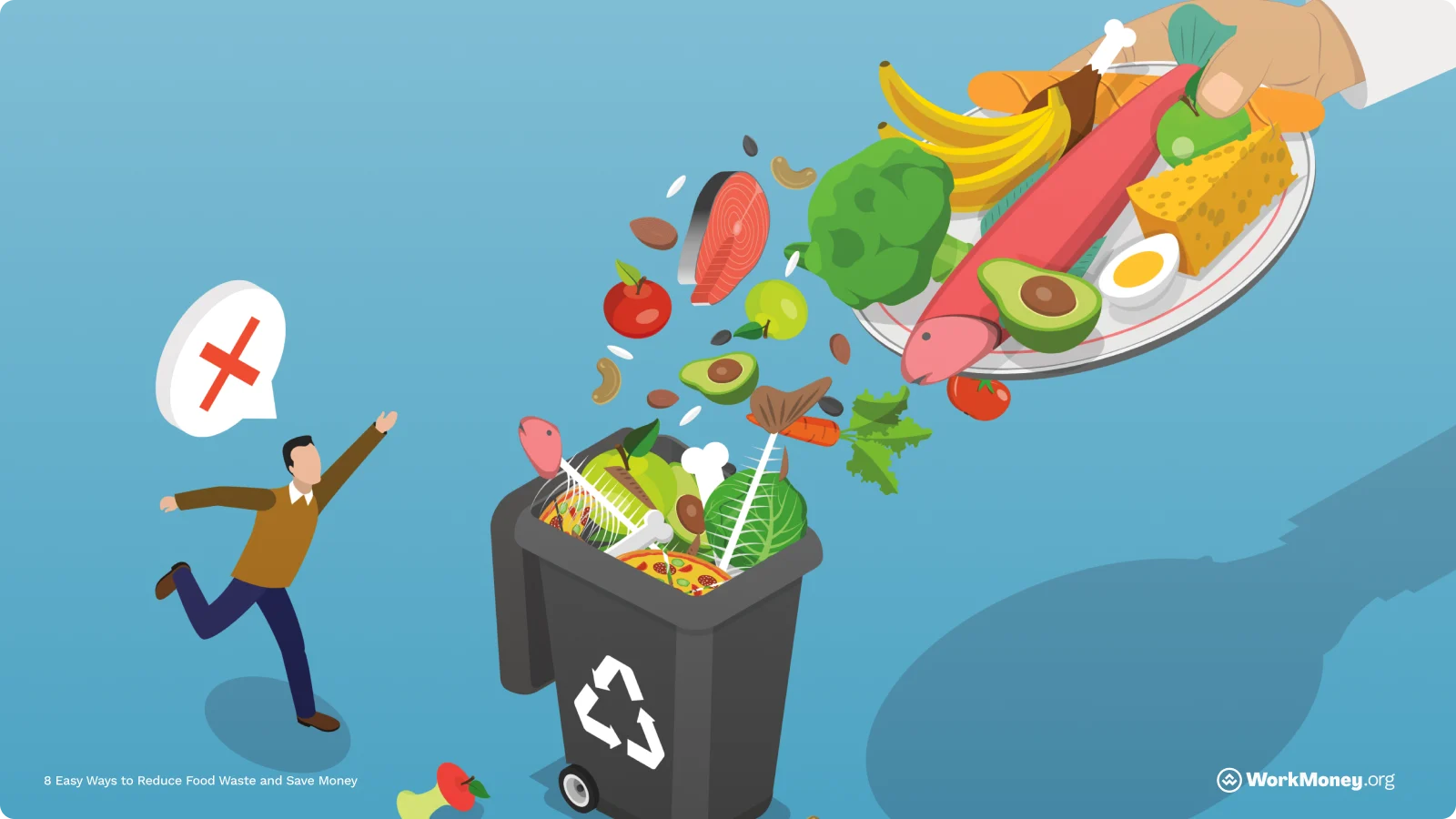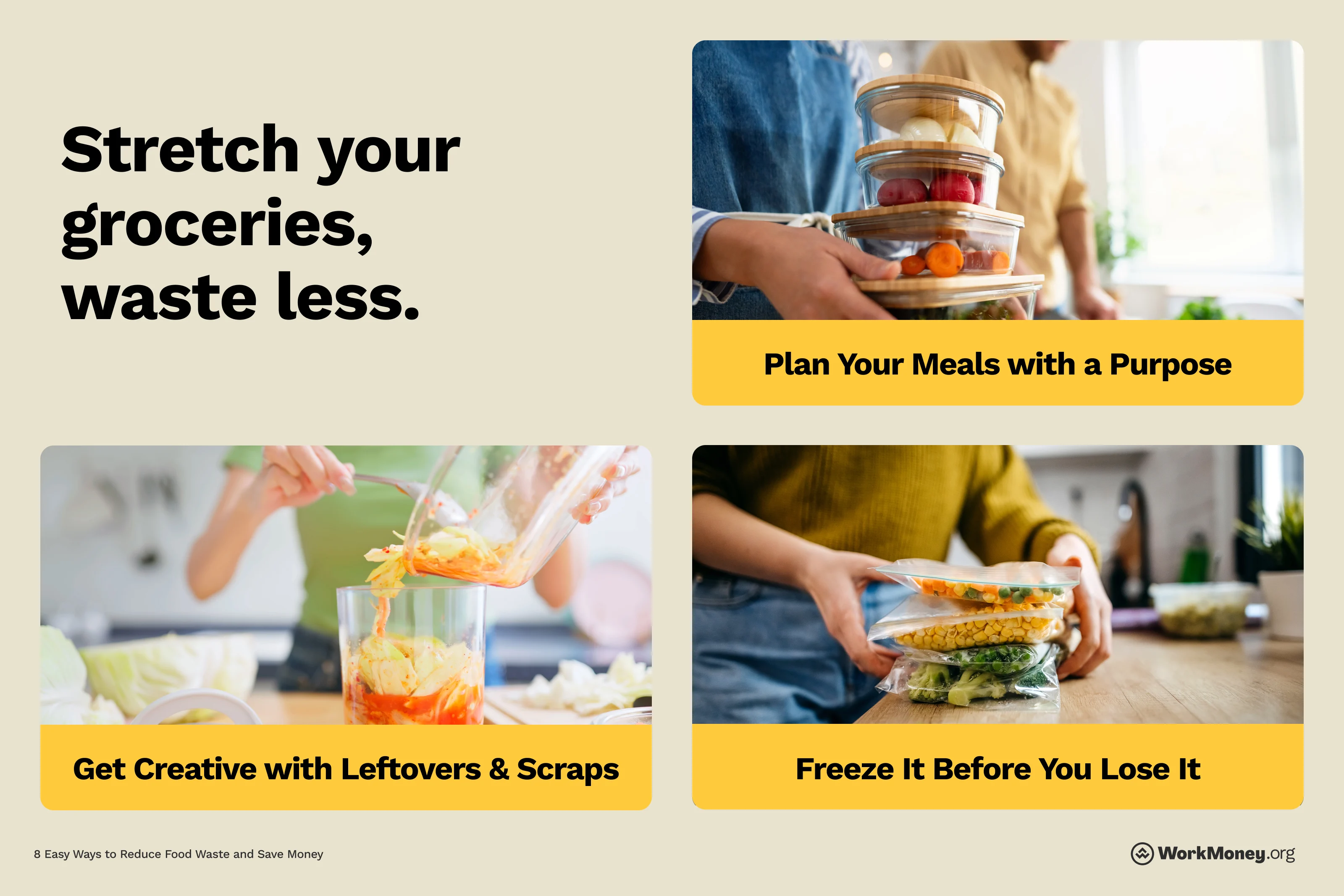8 Easy Ways to Reduce Food Waste and Save Money
Simple tips to help you reduce food waste and stretch your grocery dollars

Food prices are still eating away at family budgets and every bit of waste adds up. According to the latest USDA forecasts, grocery store prices have risen 2.2% over the past year, with categories like beef, poultry, and eggs seeing even sharper increases. Egg prices alone are expected to jump more than 24 33% in 2025, driven by supply shortages from ongoing bird flu outbreaks. That makes every leftover, half-used veggie, or forgotten carton of eggs feel like money straight out of your pocket.
The impact of reducing food waste goes beyond your grocery bill. Wasted food is a major contributor to environmental harm, accounting for about 30–40% of the U.S. food supply ending up in landfills (USDA source). By making small changes at home, you’re not only saving money but also cutting down on unnecessary waste.
The good news? The WorkMoney team put together a few simple, affordable habits can help you stretch your groceries and reduce waste, even when food prices feel unpredictable.

About the Author

Jacqueline DeMarco
Jacqueline DeMarco is a seasoned personal finance writer with over seven years of expertise covering important financial topics like credit cards, budgeting, banking, and insurance. Her work has been featured by top financial brands and publications, including Newsweek, Fortune, USA TODAY Blueprint, Bankrate, CreditCards.com, SoFi, and Northwestern Mutual.

